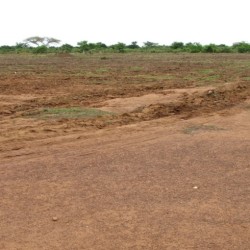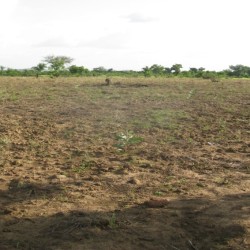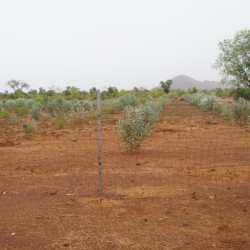Ghana Farmers Bag Better Harvest Returns
December 4, 2015
Farmers in the Upper East region of Ghana are embracing new methods to reduce post-harvest loss, and discovering the potential of Australian Acacia trees for land regeneration, as part of World Vision’s Farmer Managed Natural Regeneration (FMNR) project in the Talensi District.
The Talensi District project began in April 2012 and has since attracted more than 7 400 participants. The project aims to increase household food production, and improve and diversity household income.
Post-harvest losses are a key cause of food insecurity and poverty for farmers and their families. The situation has been addressed through the FMNR project, so that food can be available for households and the community year-round.
Farmers in six cluster communities took part in post-harvest losses education, learning how to use Perdue Improved Cowpea Storage (PICS) bags. The education program covered the timely harvesting of crops, appropriate transport of produce, proper drying and processing, and the use of PICS bags which are effective in preserving seeds for periods longer than six month.
The training has resulted in several improvements for farmers. They are able to preserve their produce for longer periods of time, so that it can be sold at times of higher prices, and is also available to households when needed. The use of PICS bags prevents food poisoning which can occur when farmers use chemicals to store their produce.
Aussie Acacias growing strong in Ghana
The FMNR project is also introducing farmers to new varieties of trees that can enrich their fields. Edible Australian Acacia Nurseries have been established in three communities; Wuug, Sawalga and Gbane. Thousands of poly plot seeds have been nursed, including poly plots of Acacia Colei and Acacia Torulosa seeds.



Above: Photos of Acacia Plantings in a field at Namoligo taken in July 2014, August 2014 and March 2015 document their rapid growth.
In partnership with the Forestry Research Institute of Ghana, project staff visited and assessed the Acacia field at Namoligo. The survival rate has been very good for 18 Acacia species and the Faidherbia species planted in August 2014.
Measurements of the Acacia species shows some measured higher than 2.5 metres within six months of transplanting. The project is experimental, and after two years the findings will inform recommendations for farmers as the best species for them to grow in the district, to reduce hunger and poverty.
